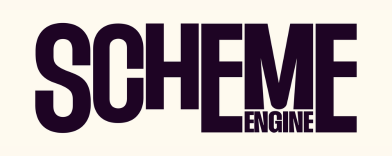
“We’re Not Selling a Product – We’re Preventing Death”: Protecting Uzbek Pedestrians

In Uzbekistan, more than 2,400 people die yearly in traffic accidents. Over one in 10 are children. That’s eight times higher than in Europe.
One of the causes is simple: in the midst of a national energy crisis, there’s a severe lack of light on the roads. At night, drivers don’t stop for pedestrians they don’t see.
Rather than wait decades for authorities to implement the necessary and expensive upgrades to infrastructure, the unlikely trio of Synthesis Agency, Gross Insurance, and Uzum Market realised that united, they could offer a mutually beneficial solution.
Synthesis brought the idea, Gross brought the mission, and Uzum brought the infrastructure. “It was an unusual partnership,” admits Farrukh Sharif, executive creative director at the independent creative agency, “but that’s where the power came from. Gross Insurance was losing money due to night-time accidents. Uzum saw that 30% of its orders were picked up after dark. Two very different industries, one shared crisis. We simply helped them see their common ground – not in advertising, but in action.”
Quick, scalable, and low-cost, their idea was the Visible Bag. Replacing Uzum’s usual carrier bags, its reflective design turned customers into walking pedestrian crossing signs.
“We didn’t just brand a bag,” explains Farrukh, “we redesigned its function. It had to reflect light, be practical, recognisable, affordable, and safe. We tested dozens of prototypes to balance utility, symbolism, and durability. The final result was something people actually wanted to carry – day or night.”
Over 10,000 totes were distributed in just the first month, and the movement skyrocketed from there, with city authorities even handing out Visible Bags to schoolchildren. The response was enthusiastic. “People shared photos, children brought the bags to school, strangers stopped drivers saying, ‘You can see me now.’ The campaign reached nearly 49% of the country with no paid media.”
The much-needed innovation had effectively increased pedestrian visibility and thus reduced the risk of accidents in low-light conditions – beneficial for all parties involved. People were safer, Gross saw profits rise, and Uzum earned lasting loyalty.
Reflecting on the process, Farrukh says that building trust was the biggest hurdle in bringing the ‘Visible Bag’ campaign to life. “We were asking brands to believe that a bag could be a media channel – and that people could become ‘living signs’. It was untraditional. Convincing them it wasn’t a PR stunt, but a life-saving tool, was the first challenge.” It’s a topic Farrukh seems passionate about, expressing his view that brands carry a huge responsibility to address the issues affecting their customer bases – especially in places where the public sector is slow to act. “Brands have resources, logistics, influence. If they stay silent, they lose more than just relevance – they lose the chance to be truly meaningful,” he argues.

In addition to its positive real-world impact, it doesn’t hurt that ‘Visible Bag’ has gone on to win Gold at the AdForum PHNX Awards and Silver at the Baku Flames Awards; but watching the case study video might shock you – it contains harrowing footage of pedestrians being hit by cars. Asked why Synthesis Agency chose not to censor it, Farrukh’s stance is clear: “because we’re not selling a product – we’re preventing death. We couldn’t afford to sugarcoat reality. People needed to see the consequences of invisibility. This wasn’t shock for shock’s sake – it was about creating urgency and empathy.”
Ambitions for the future of the campaign are big. “We want the Visible Bag to become a national safety program – not a one-off activation,” says Farrukh. “The next step is scaling to more regions – and even more countries.”














